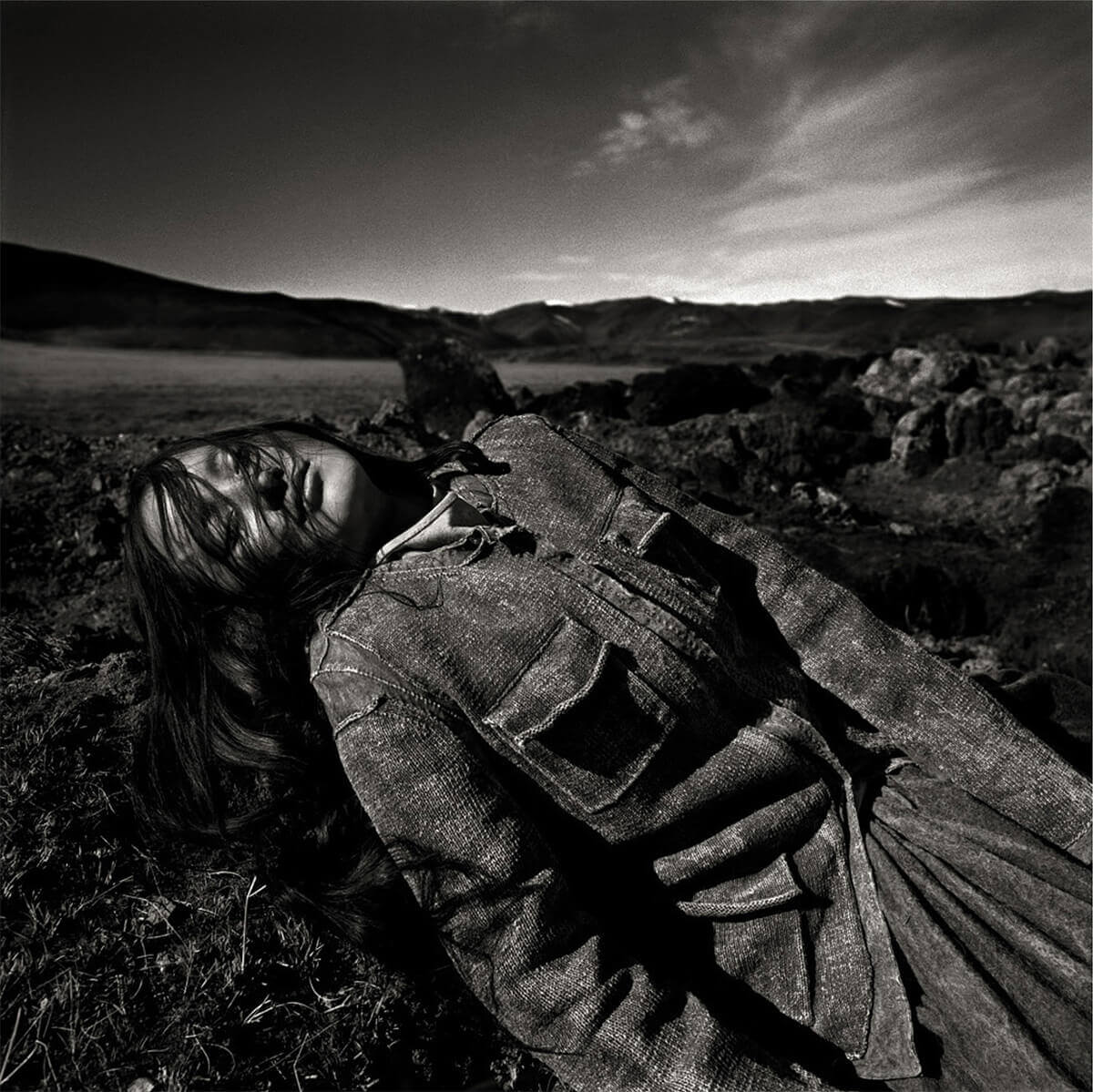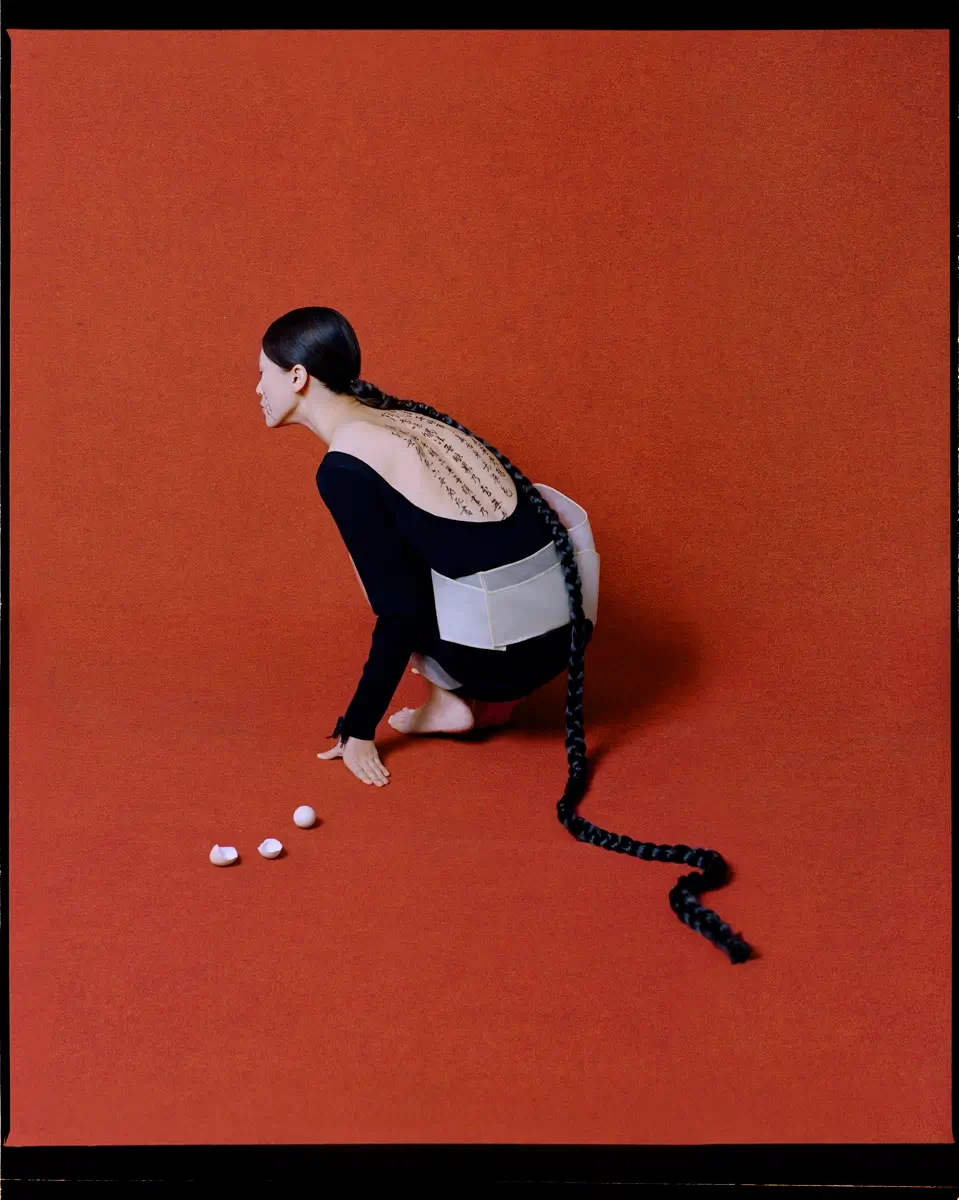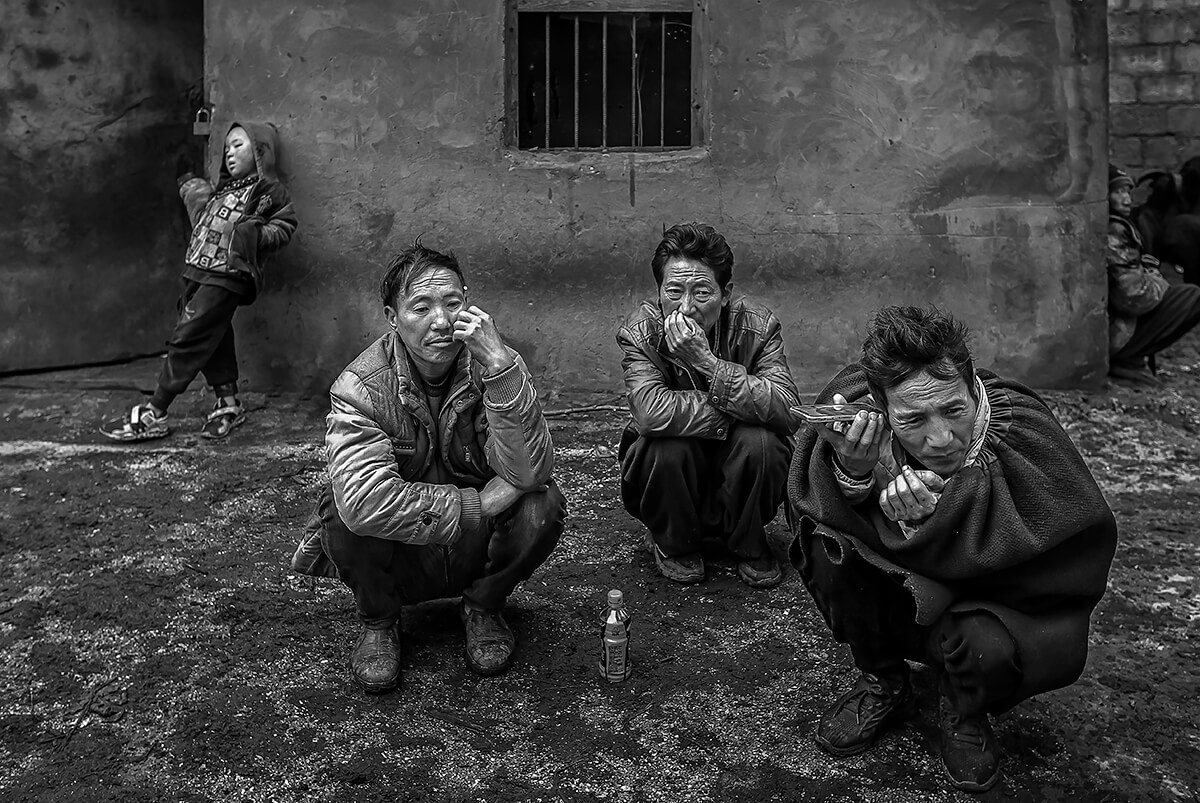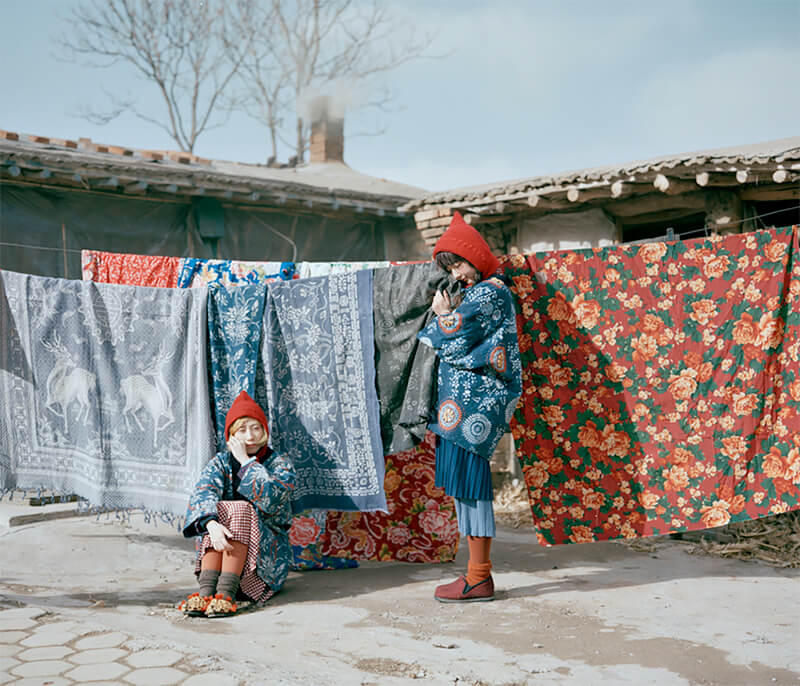Photography has been a part of China's cultural landscape since the mid-1800s, coinciding with the arrival of European photographers in Macao during that period. Initially, in the 1850s, these photographers established studios primarily in coastal port cities. Over time, their Chinese apprentices and local competitors expanded their presence across various regions. By the close of the 19th century, photographic studios had proliferated in all major Chinese cities, offering services to the burgeoning middle-class population for capturing portraits during significant family events. Both Western and Chinese photographers actively documented everyday street scenes, pivotal wartime events, and notable personalities of the era. Photography also gained traction as a hobby among the affluent, with figures such as Empress Dowager Cixi frequently sitting for portraits.
In the early years of the People’s Republic of China, state-sponsored photographers such as
Hou Bo and
Xu Xiaobing produced iconic images of Mao Zedong and other leaders, shaping a highly formalized visual culture. While these works were emblematic of the official style, alternative voices would emerge decades later.
The early 1990s marked a period of remarkable creative resurgence in Chinese photography, fueled by socio-political changes and increasing exposure to international art practices. This resurgence, however, waned over the following decade amidst a climate of uncertainty and apprehension. Optimism from the embrace of capitalist principles and loosening restrictions in the 1980s gave way to somber reflection following the tragic events of the Tiananmen Square massacre on June 4, 1989. By 1992, economic reforms continued, but political liberalization abruptly halted.
Amidst this tumultuous backdrop, artists found solace in creative endeavors, using photography to articulate emotions and perspectives. Unlike conventional street photography or photojournalism, these artistic expressions often took on an avant-garde and introspective tone. Within Beijing’s East Village, a vibrant community of free-spirited artists thrived.
Rong Rong, for instance, captured poignant moments of performance art and co-founded the first Chinese conceptual art photography magazine, New Photo. Artists such as
Ai Weiwei also began documenting performances and installations, blending photography with broader conceptual practices.
In the present day, contemporary photographers primarily draw inspiration from international sources, driven by cultural exposure and, historically, limited access to their own photographic heritage. Unlike predecessors, modern photographers often prioritize aesthetic principles over documentary intent, aligning themselves with the ethos of visual artists.
It remains imperative to explore the plurality of Chinese photography. Throughout the 20th century, there was a tendency to categorize the medium into predefined concepts, creating a sense of uniformity. Breaking from this notion is challenging, yet necessary, to recognize diverse expressions. What does it truly mean to be a Chinese artist in a digitally interconnected world, where camera-equipped devices are ubiquitous and censorship is increasingly difficult to enforce?
While location continues to matter, the term “Chinese photography” can feel abstract. Nonetheless, China retains unique characteristics. In the early 2000s, photography was less prevalent, but today, many young people embrace the medium from an early age. This burgeoning interest coincides with rapid experimentation and bold innovation, prompting galleries to engage with artists in a continuous dialogue of introspection and risk-taking..
Photography in China continues to face challenges in terms of institutional support. Nevertheless, private initiatives are steadily emerging and helping to fill critical gaps. Among them, Huang Yunhe—director of
OFOTO Gallery and founder of
ANART Space in Shanghai—has expressed the ambition to establish a dedicated photography museum in China. While his efforts have been important in cultivating audiences and supporting emerging photographers, the impact of any single private initiative remains limited, and broader collaboration across institutions is essential to strengthen the photographic ecosystem.
Developing photography as an art form in China requires long-term cultural investment, the nurturing of new talent, and the creation of platforms such as residencies, curated programs, and educational initiatives. This collective effort is reinforced by the work of major domestic institutions and galleries, including
M+ Museum in Hong Kong,
Blue Lotus Gallery in Hong Kong,
Xie Zilong Photography Museum,
M97 Gallery & Project Space, and
Three Shadows Photography Art Centre, as well as online platforms such as
Photography of China.
Chinese photography is also gaining increasing visibility on the international stage. Galleries and institutions abroad—such as
Eli Klein Gallery in New York City and
PARIS-B (formerly Galerie Paris-Beijing)—regularly present work by Chinese photographers, contributing to broader recognition of their contributions to contemporary visual culture. Strengthening links between private initiatives, domestic institutions, and international platforms remains essential for building a sustainable and vibrant photographic culture in China.
Here are 10 contemporary photographers featured on All About Photo you should know.
Liu Bolin
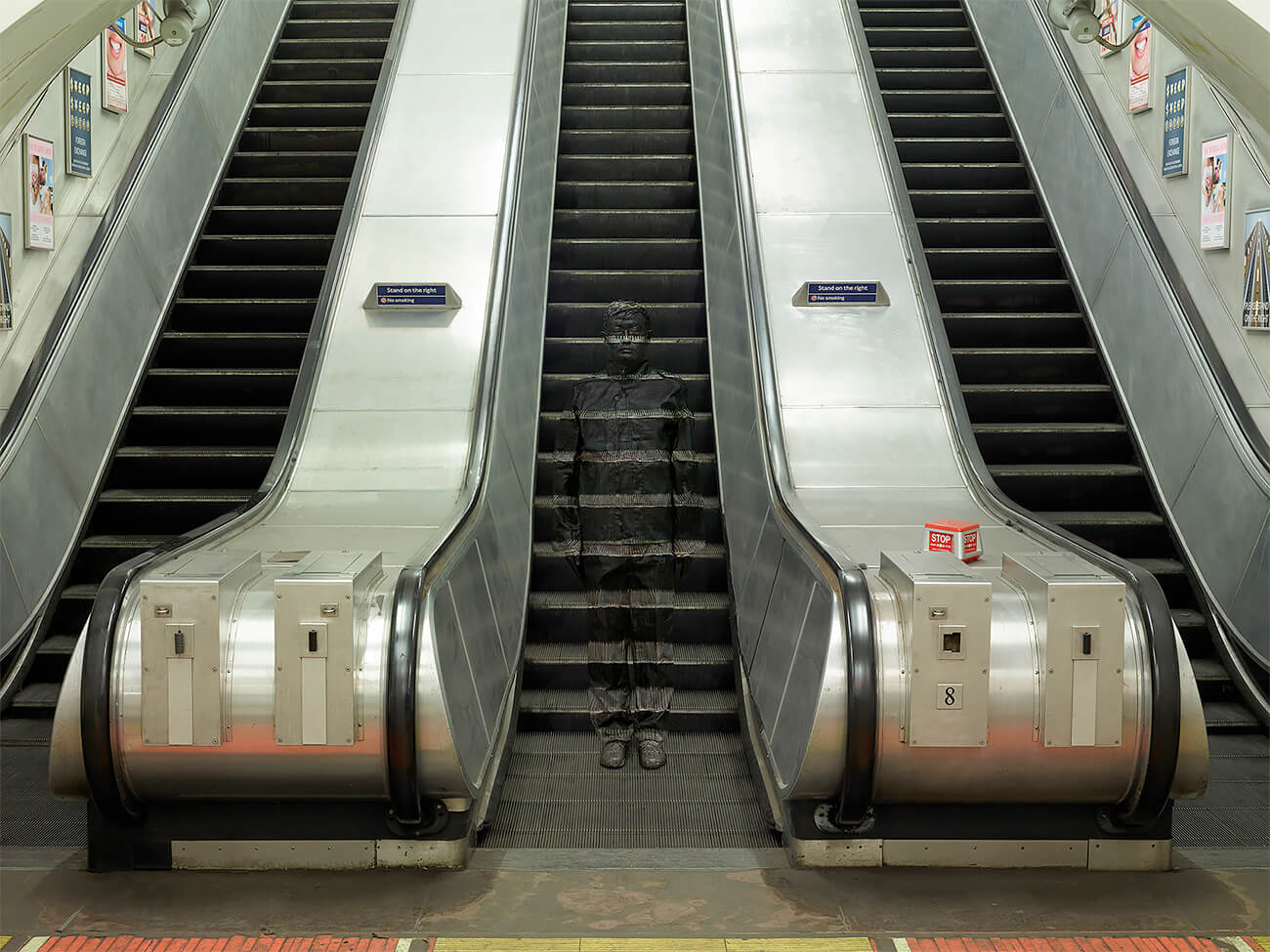


Liu Bolin is an artist born in China’s Shandong province in 1973, and he earned his Bachelor of Fine Arts from the Shandong College of Arts in 1995 and his Master of Fine Arts from the Central Academy of Fine Arts in Beijing in 2001. His work has been exhibited in museums around the world. Also known as "The Invisible Man", Liu Bolin's most popular works are from his "Hiding in the City" series; photographic works that began as performance art in 2005. Liu belongs to the generation that came of age in the early 1990s, when China emerged from the rubble of the Cultural Revolution and was beginning to enjoy rapid economic growth and relative political stability. Since his first solo shows in Beijing in 1998, Liu Bolin’s work has received international recognition.
Better known as The Invisible Man in media circles. He discusses the social concerns of his home country through his artistic practice, most prominently through his ‘camouflage’ installations. Traversing mediums such as performance, photography, Liu Bolin dissects the tense relationship between the individual and society by ‘disappearing’ into environments which are sites of contention and criticism.
His “Hiding in the City” series has been displayed in numerous museums and institutions across the globe. Inspired by his powerful visual messages, artists and institutions and organizations such The Louvre (Paris, France), Harper’s Bazaar Magazine, JR, Carlos Cruz-Diez, Jon Bon Jovi and Kenny Scharf have invited Liu Bolin to collaborate on creative projects.
Mi Zhou
Mi Zhou was born in 1962 in China, studied Civil Engineering in college. Following graduation, worked for 13 years as a field engineer for Chinese National Railroad Survey and Design Institute. In 1997, obtained Master degree in Communication Arts from New York Institute of Technology. From 1997 to 2004, worked as art director at Y&R /K&L advertising Inc., New York. Since 2004, resides in San Francisco, USA, working as freelance photographer, mainly focusing on personal projects, and working with non-profit organizations on social documentary.
Liu Zheng
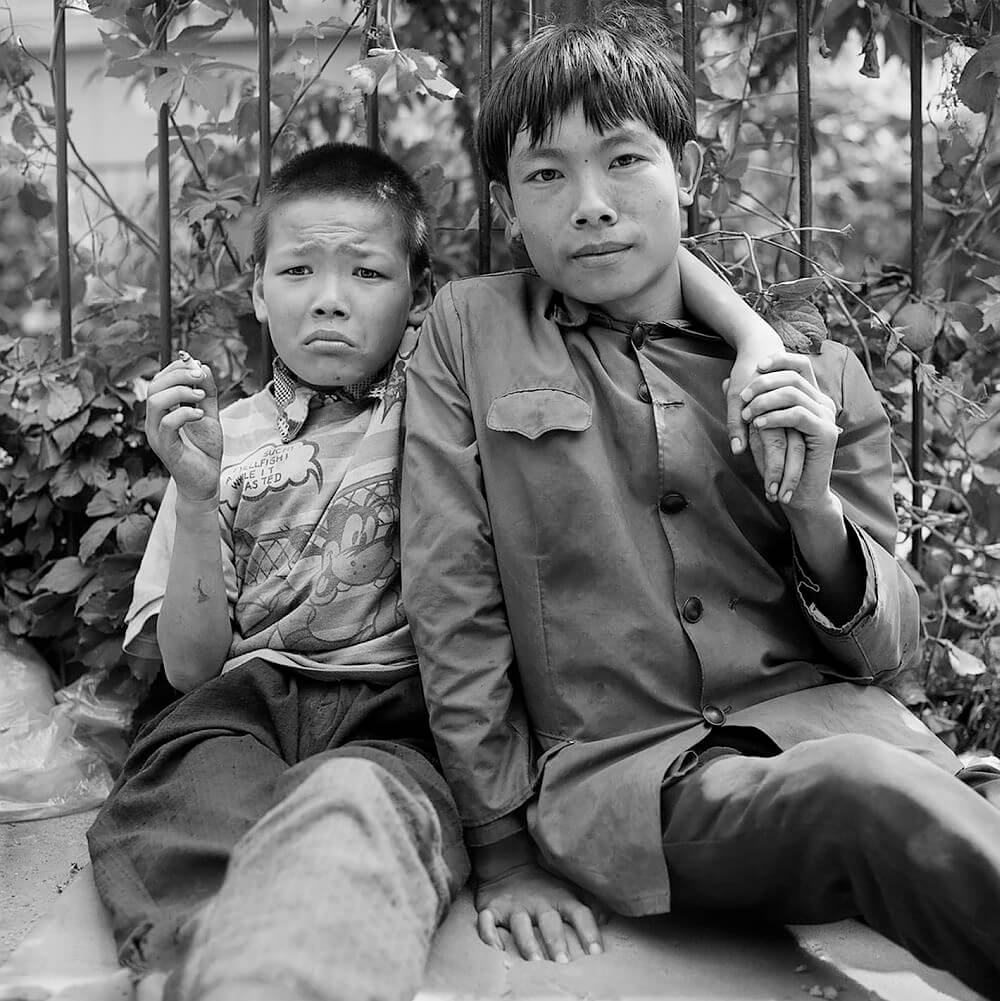


Liu Zheng was born in 1969 in the Hebei Province, China. His signature graytone photographs have for years starkly framed, in political and provocative situations, his human subjects. When he works in colour, the tones are awash in sepia or a doctored saturation that comments on the nostalgic nature of his topics – his Peking Opera series in particular reflects this.
Liu's background is not rooted in arts . After majoring in optical engineering at the Beijing Institute of Technology, he joined a local paper as a photojournalist, where he covered the coal mining industry. This laid the foundation for his interest in the lives of the countrymen that toil endlessly; one of his first series as an artistic practitioner explored the lives of ethnic minorities and our perception of them. He continues to eke out of the histories and stories of his subjects and topics in photography, and has published several volumes of his series.
Liu Zheng's work has been exhibited in solo shows including Dream Shock, Three Shadows Photography Art Center, Beijing, China (2013); Dream Shock, Zen Foto Gallery, Tokyo, Japan (2009); Liu Zheng: The Chinese, Williams College Museum of Art, Williamstown, MA (2008); Liu Zheng: Survians, SOHO New Town, Beijing, China (2005); Liu Zheng: The Chinese, Yossi Milo Gallery, New York, NY (2005); Liu Zheng, Rencontres Internationales de la Photographie, Arles, France (2003); The Chinese, Central Academy of Fine Arts Museum, Beijing, China (2001); and Three Realms and The Chinese, Taipei Photo Gallery, Taipei, Taiwan (1998).
His works have also featured in group shows including the Minsheng Art Museum in Shanghai, China; Smart Museum of Art in Chicago, IL; The J. Paul Getty Museum, Los Angeles, LA; San Francisco Museum of Modern Art, San Francisco, CA; Mori Art Museum, Tokyo, Japan; Asia Society and Museum, New York, NY; the Victoria and Albert Museum, London, England; and Chambers Fine Art, Beijing, China.
He has also participated in the 50th Biennale di Venezia in Venice, Italy and the International Center of Photography Triennale, New York. His work is in the collections of the Guy and Miriam Ullens Foundation, Geneva, Switzerland; the Metropolitan Museum of Art, New York, NY; Uli Sigg Collection, Mauensee, Switzerland; and the Museum of Contemporary Art, Los Angeles, CA.
He currently lives and works in Beijing, China.
Fan Ho
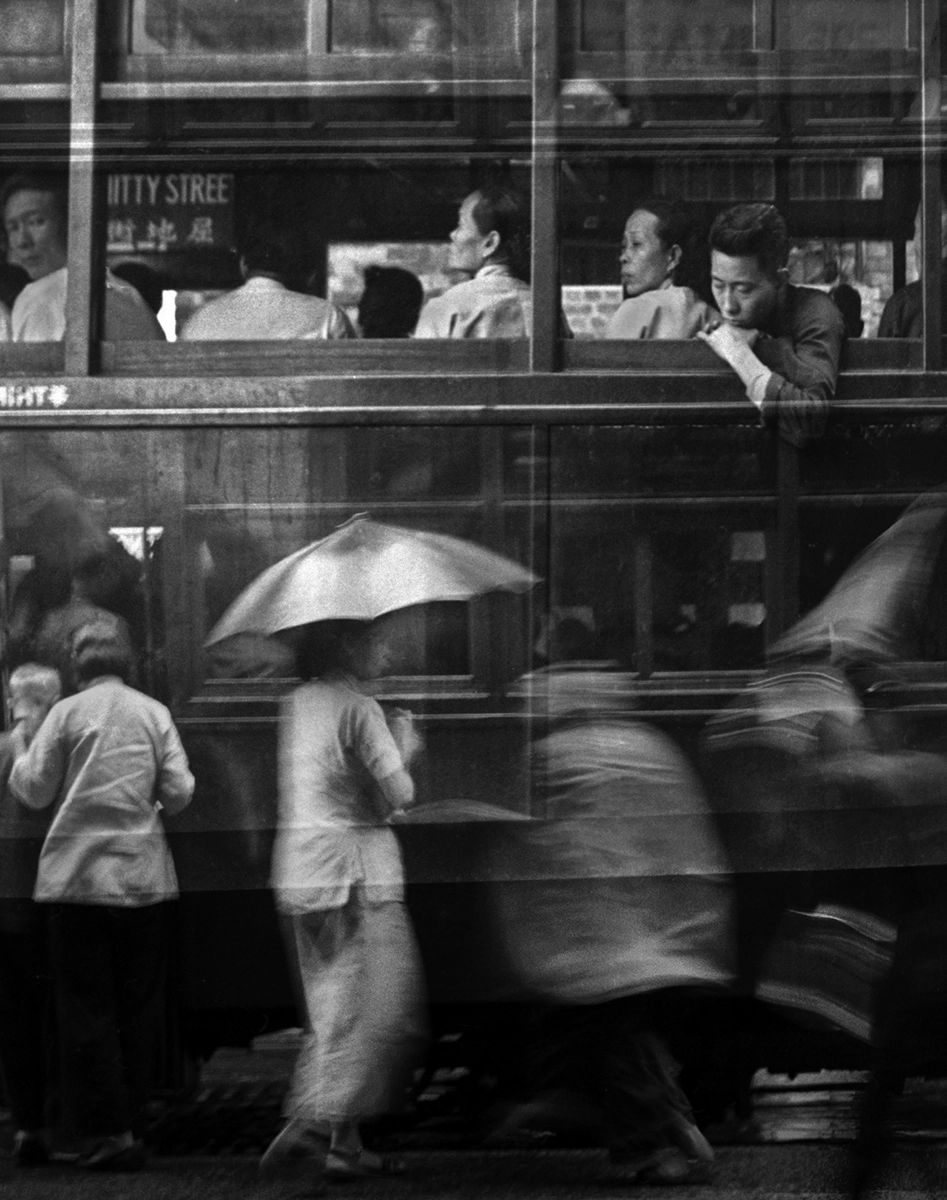


Fan Ho's (born in Shanghai in 1931) photographic career started at the early age of 14 when given his first Kodak Brownie from his father. Within the first year he won his first award in 1949 in Shanghai. At the age of 18, he acquired his twin lens Rolleiflex with which he captured all his famous work after he moved to Hong Kong with his parents and continued to purse his love for photography.
Dubbed the "Cartier-Bresson of the East", Fan Ho patiently waited for 'the decisive moment'; very often a collision of the unexpected, framed against a very clever composed background of geometrical construction, patterns and texture. He often created drama and atmosphere with backlit effects or through the combination of smoke and light. His favorite locations were the streets, alleys and markets around dusk or life on the sea.
What made his work so intensely human is his love for the common Hong Kong people: Coolies, vendors, hawkers selling fruits and vegetables, kids playing in the street or doing their homework, people crossing the street… He never intended to create a historic record of the city's buildings and monuments; rather he aimed to capture the soul of Hong Kong, the hardship and resilience of its citizens.
Fan Ho was most prolific in his teens and 20s and created his biggest body of work before he reached the tender age of 28. His work did not go by unnoticed at his time. He won close to 300 local and international awards and titles in his day through competing in the salons. His talent was also spotted by the film industry where he started out as an actor before moving to film directing until retiring at 65.
Fan Ho is a Fellow of the Photographic Society and the Royal Society of Arts in England, and an Honorary Member of the Photographic societies of Singapore, Argentina, Brazil, Germany, France, Italy and Belgium. He most recently won a "Life-time Achievement Award, the 2nd Global Chinese International Photography Award, China, 2015" by the Chinese Photographic Society (Guangzhou).
During his long career he has taught photography and film making at a dozen universities worldwide. His work is in many private and public collection of which most notable are: M+ Museum, Hong Kong, Heritage Museum, Hong Kong, Bibliothèque National de France, Paris, France, San Francisco Museum of Modern Art, USA, Santa Barbara Museum of Art, USA and many more.
Han Yang
Han Yang is a London-based visual artist, photographer, and creative director whose work explores identity, femininity, and the intersections of gender, creativity, and technology. Drawing from her Chinese heritage, Han weaves together abstract compositions, surreal elements, and philosophical symbolism to craft emotionally charged images that challenge conventional narratives. She graduated with distinction from the MA Fashion Photography program at the University of the Arts London and was a PhD researcher in Digital Humanities at King’s College London. Her work has been featured in Vogue Italia, Harper’s Bazaar, Vanity Fair UK, and exhibited internationally, including at Christie’s London and Zebra One Gallery. Han is a recipient of multiple awards, including the Eve Arnold Photography First Prize and the Nikon Cup.
Chen Jiagang
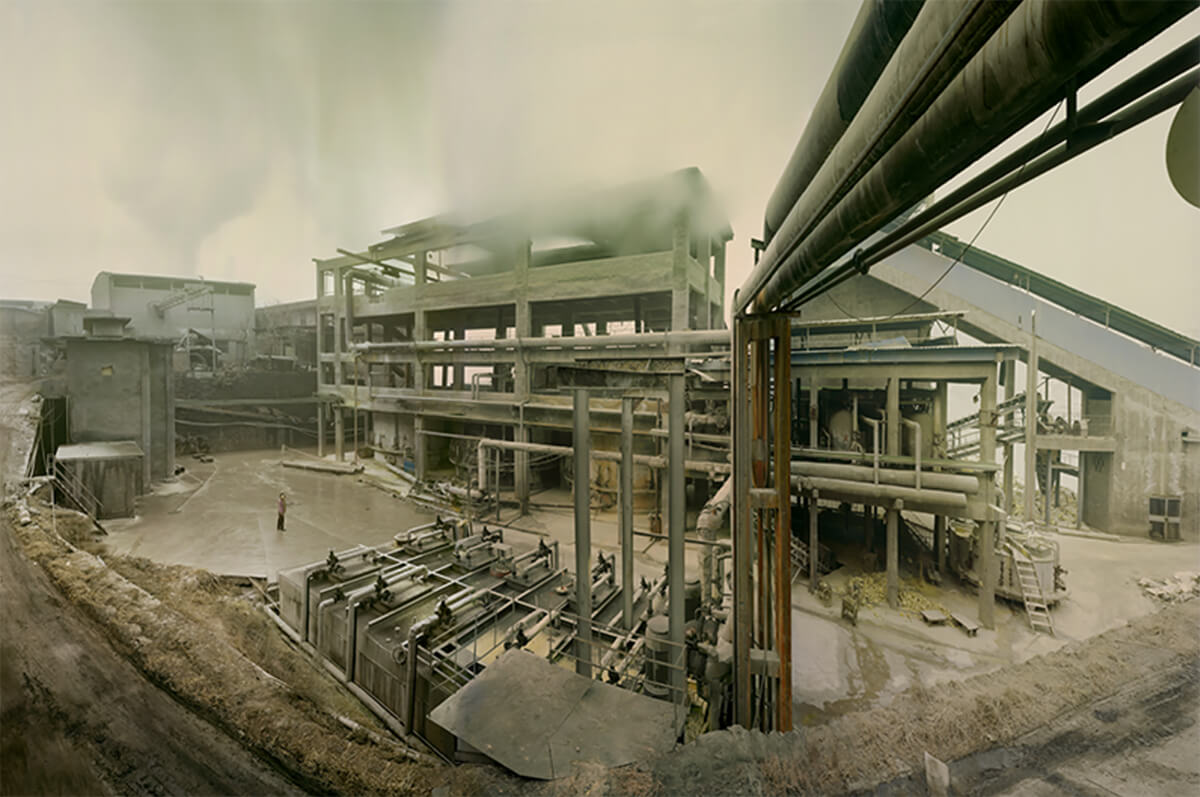


Born in 1962 in Chong Qing, Chen Jiagang began his career as a celebrated architect and real estate developer before making the transition to photography. In 1999, he was named one of twelve "Outstanding Young Architects" by the United Nations. Jiagang is the founder of the Sichuan Upriver Museum, the first private museum in China and the author of Third Front (Timezone 8 Limited, 2007). He currently lives and works in Beijing.
Although originally trained as an architect (and awarded by the UN the accolade of being one of the 12 ‘outstanding young architects' in China), Chen Jiagang has been a practicing photographer for over 12 years, and has exhibited widely since 1999. He has twice been awarded the Excellent Works Award at the annual China Photographic Arts Exhibitions. Chen photographs often feature obsolete and useless factories, hidden away in his country's hinterlands. Among these monumental, abandoned ruins, these industrial leftovers, he places ghostly human figures, reminding us of the workers who lost their jobs and were sent back home to start again. He documents the effects on society of China's extraordinary development drive in these large, sumptuous compositions.
Zhang Jingna
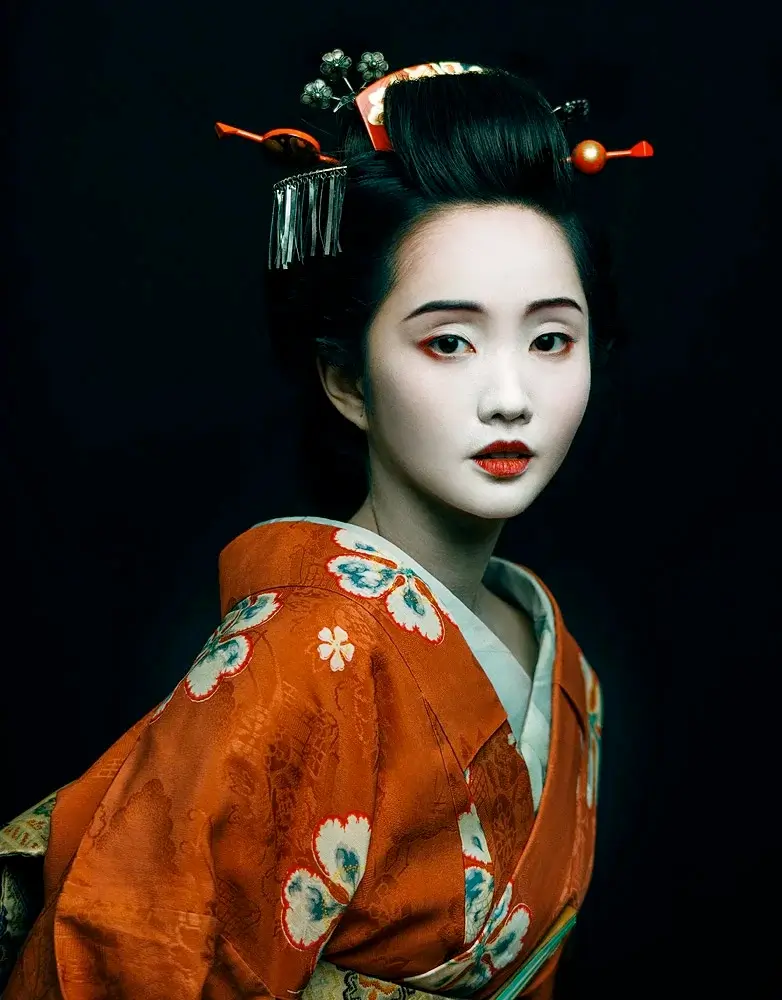


Born in Beijing and raised in Singapore, Jingna Zhang is a fine art photographer and art director in New York, Los Angeles, and Seattle. Inspired by the Pre-Raphaelites and anime, Jingna’s work interweaves Asian aesthetics with western art styles, bringing unique visions of painterly images to fashion and fine art photography.
Jingna’s works have appeared on Vogue China, Vogue Japan, Harper’s Bazaar China, and Elle Singapore. She has exhibited with PhotoVogue at Leica Gallery Milan, Cle de Peau Beaute in Hong Kong, and Profoto at Tsinghua University. Her clients include brands like Mercedes Benz, Lancome, Canon, and Team Liquid. She has been a speaker and mentor at Square Enix Japan, Trojan Horse is a Unicorn, School of Visual Arts, Laguna College of Art and Design, and Monterrey Institute of Technology.
Prior to her work behind the camera, Jingna was a national athlete on Team Singapore, and founder of an esports team in StarCraft 2. She was an agent for concept artists and illustrators, with clients such as LucasArts, Amazon Publishing, and Sony Music Japan.
Jingna was named on Forbes Asia’s 30 Under 30 list for Art & Style in 2018. She is an alumna of Stanford Ignite.
Jingna is currently working on Cara, a social network and artist platform that filters AI-generated media for the entertainment industry. Her ongoing projects include a course on artistic portrait photography, Motherland Chronicles, and an upcoming photobook inspired by anime and manga.
Haikun Liang
Liang Haikun has been engaged in photography for 22 years and is a national second level photographer in China; The work has won 185 awards in various well-known international photography competitions, has been exhibited nearly 1600 times, and has been exhibited over 300 times worldwide. Some of the works have been published in well-known magazines and official websites around the world, including the famous British magazine Breath, the authoritative South Asian photography magazine Better Photography, Sony Photography World's official website, and the Royal Society of Photography's official website
Shuwei Liu
Shuwei Liu (b.1985) was born in Tangshan and currently lives in Shanghai, China.
He received his Bachelor of Engineering in Guangdong University of Technology in 2009, then he decided to do what he really love such as photography, design and writing.
He's a finalist of LensCulture Portrait Awards 2016. His works got exhibited internationally include Power Station of Art, the State Hermitage Museum, Artefiera Bologna, JIMEI × ARLES Photo Festival Three Shadows Photography Art Centre, Vu Photo. He was an residency artist in Vermont Studio Center, Red Gate residency and granted by them, and was awarded Fine Art "First Place" by PDN, and he was a finalist of LensCulture Portrait Awards, Three Shadows Photography Awards, Barcelona International Photography Awards, British Journal of Photography, described as "Ones to Watch" talents and Photovogue Festival.
Yang Yongliang
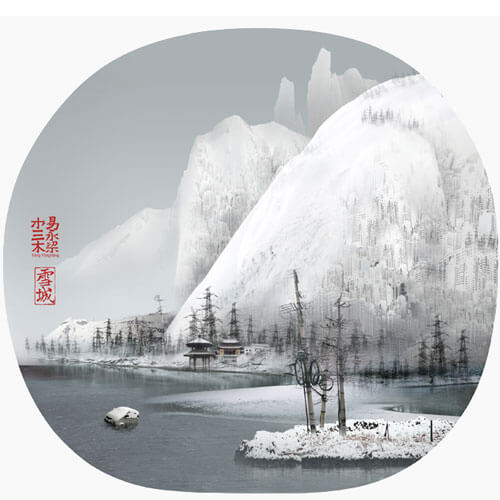


Born in 1980 in Shanghai, Yang Yongliang graduated from China Academy of Art in 1999, majored in visual communication. He currently works and lives in Shanghai.
He started his experiments with contemporary art in 2005, and his practice involved varied media including photography, painting, video and installation. Yang exploits a connection between traditional art and the contemporary, implementing ancient oriental aesthetics and literati beliefs with modern language and digital techniques. His work as an expanding meta-narrative that draws from history, myth and social culture, and plays out in the context of the city and its ever-changing landscapes.
He started to learn traditional Chinese art and culture since childhood, the influence of which is seen in the form of his art: a sense of traditional aesthetics can be clearly perceived. In terms of media and content, however, it is brimming with a strong sense of post-modernism.
Yang’s work has been exhibited at Moscow Biennale, Ullens Center for Contemporary Art and National Gallery of Victoria among others and is collected by public institutes such as the British Museum and the Metropolitan Museum of Art.



